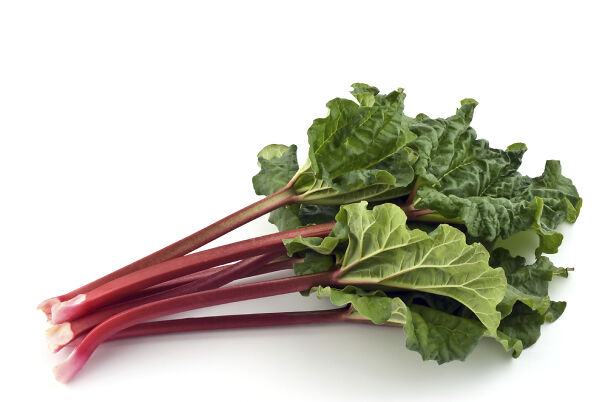Even though it’s something we interact with every single day, food can actually be pretty weird when we think about it. After all, spoiled milk is something we might throw straight into the trash, but cheese is a wonderful, versatile staple most of us know and love.
Someone asked “What is a food that makes you think, “How did humans discover this was edible?”” and people share their favorite examples. So get comfortable as you scroll through, grab a snack, upvote the best ones and be sure to share your own thoughts in the comments section below.
This post may include affiliate links.
 The first person to eat an oyster - how hungry was that m**********r?
The first person to eat an oyster - how hungry was that m**********r?
"Hey guys, I found a loogie in this slimy rock! Want some?".
 That expensive coffee made from beans collected from animal droppings.
That expensive coffee made from beans collected from animal droppings.
Who the hell looked at that and said "Why not? Let's give it a go.".
 Cheese is weird.
Cheese is weird.
Hey ogg, that milk you were storing has gone weird and lumpy, should I throw it out?
Nah, it's still good, pass it here.
SirTwitchALot reply:
Rennet, which causes milk to curdle is naturally present in the stomachs of calves. Some speculate that people may have used stomachs as storage vessels. You put some milk in there, and it curdles. Food is scarce, so you're not about to let it go to waste, thankfully the chunky milk actually tastes pretty damn good!
Plains Indians ate the solidified milk in bison calves stomachs. It’s how primitive people learned to mix milk and rennet
 Honey. Let's follow these highly territorial murder flies to their stronghold and eat their vomit.
Honey. Let's follow these highly territorial murder flies to their stronghold and eat their vomit.
_Molotovsky reply:
That's easy, watch a bear. It's kind of a cliche now because of cartoons but bears LOVE honey, and will climb trees to get to the hive. Probably doesn't hurt that their skin is thicker and getting stung probably tickles, but they will go to some lengths to get it."
"Some enterprising caveman watched the bear go for the hive and probably decided to taste what was left. I wouldn't want to fight the bear for it but it probably was the first sweet thing ever tasted other than fruit, so it was valued."
Valued and it has healing and antiseptic properties! So who was the first person to figure out slathering yourself with a sticky liquid would heal wounds. Then you would have to leave it there without licking or eating it off.
 The amount of effort you have to go through to make cashews edible
The amount of effort you have to go through to make cashews edible
The f**k did someone figure that out.
Maleficent_Nobody_75 reply:
Yes. The shells that surround the cashews apparently contain very toxic oils and the extraction process they need to do can be hazardous to us humans if not handled correctly. The extraction process has to be done manually, hence why the process is difficult and time-consuming. Probably the reason why they are one of the most expensive nuts on the market when I think about it.
 Ever think about coffee beans? Hey, I'm gonna roast this seed, smash it up and drown it in hot water. Bet it tastes great.'.
Ever think about coffee beans? Hey, I'm gonna roast this seed, smash it up and drown it in hot water. Bet it tastes great.'.
TheFerricGenum reply:
This one is not that difficult to come by. The beans are edible when freshly picked, and actually contain more caffeine (caffeine is lost through baking). So I bet people were regularly drawing on these as a food source since they are an upper. Someone along the line probably realized cooking things can keep them from spoiling a bit longer and started roasting their beans. If food was scarce, it’s possible they boiled these beans at one point to try to stretch their food supply. They liked the taste, and realized grinding the beans helped draw out the flavor easier.
OK, but how about civet coffee? Who was the brave soul who tried that first?
 The enigmatic durian – a fruit so pungent it could make a skunk blush. It's like someone stumbled upon this spikey orb, dared to take a bite, and thought, "Yes, let's create a culinary sensation that smells like a blend of rotten onions and gym socks." Truly, the mysteries of gastronomy know no bounds!
The enigmatic durian – a fruit so pungent it could make a skunk blush. It's like someone stumbled upon this spikey orb, dared to take a bite, and thought, "Yes, let's create a culinary sensation that smells like a blend of rotten onions and gym socks." Truly, the mysteries of gastronomy know no bounds!
I just assumed that whoever first tried it had no sense of smell.
 Blue cheese…someone left that out for too long, looked at it, shrugged their shoulders and went for it.
Blue cheese…someone left that out for too long, looked at it, shrugged their shoulders and went for it.
 Gelatin.
Gelatin.
I swear whoever invented gelatin was probably a serial killer.
Most likely noticed how after cooking a cut of meat with bones in it would gel when cooled. Now making it into a dessert is kinda weird.
 Foods that are poisonous unless prepared in a specific manner.
Foods that are poisonous unless prepared in a specific manner.
I mean who was it who first realised that the kidney beans that were poisoning everyone raw, were perfectly safe after being boiled for 20 mins?
Here is our first lonnnggg word for today. "Eating raw or undercooked kidney beans can indeed cause food poisoning. This is due to a natural toxin called phytohaemagglutinin found in the beans."
 F*****g sea urchins. why would you even want to crack that open and eat it.
F*****g sea urchins. why would you even want to crack that open and eat it.
Well, certain urchins are invasive species, reproduce rapidly and can decimate ocean habitats like kelp forests. Weird to eat, but really we should be eating more of them to help keep their numbers down.
 One of the first staple foods is kinda weird: Acorns. Acorns were actually farmed very early in human history, but to make them edible you have to soak them and treat them. Sure, you see animals eat them all the time, but animals also eat tree bark and leaves. Somehow people figured out, that you could turn the inside of acorns into flour and basically eradicate hunger by simple picking up acorns for a couple of days.
One of the first staple foods is kinda weird: Acorns. Acorns were actually farmed very early in human history, but to make them edible you have to soak them and treat them. Sure, you see animals eat them all the time, but animals also eat tree bark and leaves. Somehow people figured out, that you could turn the inside of acorns into flour and basically eradicate hunger by simple picking up acorns for a couple of days.
Acorns are poisonous to horses, but pigs love them, and their meat is extra tasty when they have eaten lots of acorns. I have lots of oak trees, and horse, so to prevent them from eating acorns I let a local pig farmer have his mangaliza pigs in my forest all winter. Yesterday he arrived with 20 teenage pigs, and come spring I'll get the meat of one of them.
 Nettles. "Ow, that m**********r stung me! Maybe I should boil it for its crimes....".
Nettles. "Ow, that m**********r stung me! Maybe I should boil it for its crimes....".
I learned how to cook stinging nettles in the Boy Scouts. Part of surviving in nature when you're hungry.
 Hakarl. I think it was probably starvation that led someone long, long ago to eat that rotten dead shark that had been fermenting in beach sand for months. Surely that could be the only reason someone would eat it because I have heard hakarl smells and tastes like p**s.
Hakarl. I think it was probably starvation that led someone long, long ago to eat that rotten dead shark that had been fermenting in beach sand for months. Surely that could be the only reason someone would eat it because I have heard hakarl smells and tastes like p**s.
 Potatoes. Early potatoes were small, hard, and poisonous.
Potatoes. Early potatoes were small, hard, and poisonous.
Methods of making them not poisonous included soaking them in running water for weeks or, in the high Andes, leaving them out on rocks high in the mountains so they effectively freeze-dried. Alternatively, you could mix them with clay when eating them - the clay would adsorb some of the toxins.
Not just potatoes but the whole nightshade family is poisonous: Tomatoes, Eggplants etc. along with potatoes. Can you imagine if we hadn't made them edible by breeding out the poison? Vegetable selections would be so much restricted. I can't imagine my food life without these vegetables.
 There’s a fruit in Brazil that needs to be cooked around 7 days, otherwise it’s toxic.
There’s a fruit in Brazil that needs to be cooked around 7 days, otherwise it’s toxic.
That sounds like a regional US dish called poke salad you have to cook the leaves twice before consuming.
The leaves are from the pokeweed plant, and yes, it's poisonous raw.
Load More Replies...So sometime along someone was saying "it has been cooking for 4 days. It can't still be toxic. ... No. Let's keep cooking."
In certain parts of Brazil is called mandioca. i have eaten it a lot of times fried. No special preparation or long cooking is needed.
They are talking about "mandioca brava" , not the normal variety ("mandioca mansa"). It translates as "feral cassava" and "docile cassava" , or something like that.
Load More Replies...Therefore the whole cooking process must be done in a (24/7) shift system, right? 🤔 🤭
Did people just die for 6 days before they knew 7 was the golden number?
Cassava, manioc, or yuca, is not a fruit, but a tuburous root, that releases hydrogen cyanide if not properly prepared.
 Gummy bears. How are you not scared the bears would attack you from the inside? Actually, I hear the sugar free ones do.
Gummy bears. How are you not scared the bears would attack you from the inside? Actually, I hear the sugar free ones do.
 Fugu. To even be allowed to make it, you need a license to show that you can consistently make it in a way that won‘t kill your customer(not to mention the training required to get the license which IIRC can only be issued by the Japanese Government). How many tries were needed to figure out the propper way to make it and why did they keep trying after the first two or three tries?
Fugu. To even be allowed to make it, you need a license to show that you can consistently make it in a way that won‘t kill your customer(not to mention the training required to get the license which IIRC can only be issued by the Japanese Government). How many tries were needed to figure out the propper way to make it and why did they keep trying after the first two or three tries?
SeiCalros reply:
Fugu fish aren't that lethal. Most people could eat a whole fish including the skin liver and ovaries which are the poisonous parts. One fugu fish COULD be fatal but most people who used to die from fugu liver had eaten several of them.
Uh no, SeiCalros. There is enough tetrodotoxin in one average size fugu to kill 30 adult humans.
 Chocolate. I mean don't get me wrong I get why they were playing around with the plant and all.
Chocolate. I mean don't get me wrong I get why they were playing around with the plant and all.
The sheer process of getting to Chocolate as a product is so weird and bizarre and kinda gross...and then it comes out as the lovely candy we know and love.
Well, but every step/ingredient is edible, so it's not far fetched to combine them.. Are you equally amazed by cake? Imagine the process of mixing so many different things and then heating the result up. How crazy is that?!
 What the f**k was bread guy doing? What compelled him to collect tiny pieces of grain, dry them out, smash them into a powder, get them wet again (but not too wet), and then put the whole thing over fire?
What the f**k was bread guy doing? What compelled him to collect tiny pieces of grain, dry them out, smash them into a powder, get them wet again (but not too wet), and then put the whole thing over fire?
There's decent evidence that bread was made by accident. A slurry Guinness like mixture was made because heating soaked grains opened the outer husks release the edible part inside. The heat along with fermentation killed some nasty bugs in the water. Some drunk dude fell asleep with a batch over some coals and the water baked off leaving the first bread.
 Our earliest ancestors in Africa likely ate a ton of yams, which were basically hard roots that I believe are also sometimes toxic. People were probably dead set on making the root vegetables where they ended up edible. Eating root vegetables as a staple might be the most engrained human tradition.
Our earliest ancestors in Africa likely ate a ton of yams, which were basically hard roots that I believe are also sometimes toxic. People were probably dead set on making the root vegetables where they ended up edible. Eating root vegetables as a staple might be the most engrained human tradition.
 Almost every edible mushroom. Lots of trial and error there, I bet.
Almost every edible mushroom. Lots of trial and error there, I bet.
shadowa1ien reply:
Shiitake mushrooms are like this. They're not deathly poisonous, but if eaten raw in medium to large amounts can cause severe itching for up to several weeks. Now imagine my face as I read that little tidbit on Google... after I had popped a raw shiitake mushroom in my mouth and had already swallowed most of it. The moral of the story, if you aren't sure, google before taste testing. my logic was since there's no warning on the store packaging, it must be fine! I didn't get the severe itching thankfully.
The morel of the story, on the other hand, looks like the mushroom equivalent of Swiss cheese.
 Lobster, crab, shrimp...
Lobster, crab, shrimp...
This is 100% a historical starvation food. Being unable to farm or hunt with weapons (due to a lack of land, weapons or hunting prowess), many people living near the sea would chase down whatever they could catch in the surf and eat it.
 The french are masters at this :
The french are masters at this :
- engorged livers from geese and ducks that have been force fed
- snails : they’re everywhere but for some reason only the French eat them, but not slugs because that would be weird
- frogs : they’re everywhere but for some reason only the French eat them, but not toads because that would be weird
- cheese with maggots in (my Norman FiL)
- Camembert cheese dipped coffee (my Norman FiL)
- Pigs ear salad
- pig and sheep’s brain (they sell them at my local supermarché)
- Normandy sausage made from god knows what (delicious it is) but I think it comes from the stomach / intestine (my Mum calls it A**s Sausage)
- not to mention turning rotten grapes into an art form / national obsession
- sheep’s testicles (FiL)
- raw beef (and if its not dodgy enough well add a raw egg too)
- Horse (like really good beef, but better).
Fois Gras was actually developed in ancient egypt, ancient greece and some parts of turkey, the, Casu martzu (maggot cheese) is Sardinian and illegal throughout europe
 Maybe not quite food, but like tobacco and Marijuana. The amount of trial and error of just smoking random things to see what happens must have been an interesting time.
Maybe not quite food, but like tobacco and Marijuana. The amount of trial and error of just smoking random things to see what happens must have been an interesting time.
Steamed-Barley reply:
It's brewed from a combination of Chacruna leaves and the vines of Banisteriopsis caapi - two completely different plants. The leaves contain DMT, while the vines contain MAOIs, which inhibit enzymes and allow DMT to enter the bloodstream and reach the brain. Both are necessary for the potent psychoactive effects to occur, you can't take one without the other.
It's been used since at least 1000 years ago. How the hell they found the correct combination is just... wow.
Fires in the vicinity of tobacco plants? Trying to put out a raging fire and discovering the smoke makes you feel a certain way but only when these leaves were involved. Or adding dried leaves to camp fires, same deal and then cos it felt good they got closer to the fire to inhale more smoke then some bright spark rolled up a leaf, lit it on fire and got a direct hit...
 Artichokes.
Artichokes.
oldcrustybutz reply:
I kinda feel like they're a specialization from a generalization though.
There are the more generalized Cardoon thistles where you more eat the stalk and stems which wouldn't be that big of a stretch to throw them on some coals, peel, and enjoy. Later someone found that the flower base was even better because you can use it as a bunch of tiny spoons to deliver copious amounts of butter to your cardoon hole.
 That blowfish stuff. The kind that they have to be super careful when preparing. How'd they figure out being good enough to prepare it?
That blowfish stuff. The kind that they have to be super careful when preparing. How'd they figure out being good enough to prepare it?
 Balut. A duck embryo still in the shell.
Balut. A duck embryo still in the shell.
In Europe, there's something quite similar to that (found in Germany, Austria and France amongst others). For that you basically take a small songbird, poke the eyes out or place it into permanent darkness so it forgets day and night, and feed it constantly until it's very fat. Then, the bird is drowned in alcohol, roasted and eaten whole with a napkin over your head. However, most people won't eat it anymore and I myself also find it really weird. If someone wants to know more, look up (Fettammer/Ortolan).
 Green Olives? Poison until soaked in brine? How did that get figured out?
Green Olives? Poison until soaked in brine? How did that get figured out?
Unprocessed olives are not toxic. In fact, the opposite is true. Olives contain oleuropein, which studies have found to be very beneficial to human health. However it also has an extremely bitter taste.
Okay but how desperate was the person who discovered cow milk...
Load More Replies...I think a lot of these things occurred when humans noticed the unintentional results of doing something else entirely. Sitting around a campfire that you made out of old dug up roots....hey that burnt root actually smells delicious and the dogs are eating it. Lets try it too.
Yeah like Lobsters. You really can't imagine someone who has gone their entire life eating different animals, looking at an animal and *not* thinking about eating it?
Load More Replies...These questions say more about the poster's ignorance of even very recent history and dislocation from food sources than anything else. But as ever, Pandas to the rescue!
None of this is the slightest but mystifying when you consider the sheer amount of history that has historied. Billions of people have lived and died, and for most of our history, we had little to do except figure out how to feed ourselves.
I think a lot of it was about survival. Humans ate whatever was edible, and learned to process the leftovers in order to make them edible as well. Nothing was wasted because every calorie counted, flavor was less important (at least at first).
What a lot of people don't realise is that the vast majority of the vegetables we eat doesn't exist in the wild. They have been selectively bred (evolved by artificial selection) from wild ancestral plants that neither look nor taste like the ones we eat today. So to ask 'who was the first person to see a Brussels sprout and think "ooh, looks tasty"?' is to ask the wrong question, since sprouts were deliberately developed entirely by humans, along with cabbages cauliflowers, broccoli, kale, and so-on, from a single species of brassica originating around the Eastern Mediterranean, a coastal plant with leaves that look similar to those of dandelion leaves and that grows a tall (1-2m / 3-7ft) flower spike covered in small, yellow flowers. Even the wild cabbage found in Europe, while almost identical to the original species, is most likely feral rather than wild, deriving from seeds blown from the early domesticated plants in gardens and fields.
from what i've read we probably got to booze from whole fruits that naturally fermented. either on our own or by watching birds and primates go for them
Rhubarb. I mean how? Why? Three guys sitting there each given a part to try and everyone goes, yip we can eat the stalks. Oh and BTW throw those guys in the pit, they're not hungry anymore, just dead
"During World War I, the British government suggested using rhubarb leaves as a food source to help ease food shortages. However, this recommendation was quickly withdrawn after reports of sickness and even death due to the toxic nature of rhubarb leaves" Our government was never the sharpest knife in the drawer, and still isn't.
Load More Replies...Most of these foods were being eaten by our ancient ancestors, long before we became homo sapiens. Just observe what monkeys and apes eat in the wild. The ones that require some prep were all probably accidents. Serendipity. It's believed soap came from a sudden rain storm that flooded a cooking firepit, and the water mixed with wood ashes and fats from cooked food and made a slippery foam on everything. Surprise! the things under that foam were clean.
The most exciting phrase to hear in science, the one that heralds new discoveries, is not “Eureka!” (I found it!) but “That’s funny …” — Isaac Asimov (I think that applies to most of these too)
Who looked at a brown spriggy weed and thought, I'll grind this up and make flour. Then I'll add water and oil and sugar and yeast. I'll squish it and squish it and squish it. Then I'll walk away and let it puff up. Then I'll punch the puff and walk away again. Then I'll throw it in the oven and make one of the most delicious things in the history of ever.
i feel like the biggest part of this story is untold because so many people died while trying!
So no one here is wondering about milk? Just me? It’s quite literally breast milk (which most of us only drink as an infant) from ANOTHER ANIMAL. Why the cow of all animals? I know yak’s milk is a thing, but what about other types of milk? Pigs milk? Horse milk? I could go on. My 2 questions are these. Who discovered and had the absolutely insane idea to milk a cow, and why don’t we do the same thing with other animals?
Goats' milk and sheeps' milk are both widely consumed. The reason we don't use milk from other animals probably has a lot to do with flavour and practicality. As to why we started using milk from other animals; my guess is that it was simply another food source that we could exploit. Why cows? Because they naturally produce high volumes, can be selectively bred to produce even higher volumes all-year round, and the flavour is the most acceptable to humans.
Load More Replies...Historians asked a Native man how his people first learned to tap maple trees for syrup. He told them, "A squirrel taught us." The historians decided that this was a silly story and the truth had been long lost, and likely they would never find out the truth. Decades later, a white man watched a squirrel only to realize that it was using a rock to tap a maple tree.
I often wonder about magic mushrooms. Who saw some fungus growing out of a cow patty and thought, I wonder what will happen if I eat that??
Tapioca. Peel, wash, rinse, boill, wash, rinse, boil, until it's nontoxic. Then use it as a thickener or pudding.
Nobody mentioned rhubarb? The stalks are edible, eating the leaves will kill you. On the same freaking piece of the plant. rhubarb-66...148f70.jpg 
Can't believe no one mentioned milk, like who first saw a cow and thought "she's hiding something really good in there and I'm gonna get jt"
Here's mine: What the hell was the person who discovered milk doing?
I'm surprised no one mentioned octopus ink, which gives nice salty oily flavour to rice. It's a delicacy of the adriatic region in Europe.
Always curious about the stuff they cook at state fairs. Deep fried butter? What? 😳
It might be fun to imagine all the things people desperately tried to turn edible to no avail. "Hey, I bet you can eat sand if you boil it long enough.... Still nothing? Maybe soak it in brine.... Or maybe feed it to the donkey and try it once it comes out again!"
Tartar sauce always amuses me. "Hey you know what would go great on this fish? Mayo and dill pickles!"
I am a person who has eaten a lot of strange things. Lead, yes. Oxalic acid, yes. Ricin, yes. Wild mushrooms, yes. Acorns, yes. Lantana, yes. And even things I would never eat I can see why hunger would make people try them. And some weird foods such as the deadlier spices have come from experiments in food preservation. But even I can't see how some foods came to be. Including chocolate, saffron (takes forever to harvest), castor oil (the beans are deadly let's press them and extract the oil), nettles.
To my greatest shame and at late age, I confess that just learned that castor oil is derived from beans and not the beaver (castor in Latin or κάστωρ in Greek). Mea maxima culpa. To my defense, some time in my life I heard that castor oil was used as lubricant and was expensive. Never knew the existence of castor beans until now.
Load More Replies...Okay but how desperate was the person who discovered cow milk...
Load More Replies...I think a lot of these things occurred when humans noticed the unintentional results of doing something else entirely. Sitting around a campfire that you made out of old dug up roots....hey that burnt root actually smells delicious and the dogs are eating it. Lets try it too.
Yeah like Lobsters. You really can't imagine someone who has gone their entire life eating different animals, looking at an animal and *not* thinking about eating it?
Load More Replies...These questions say more about the poster's ignorance of even very recent history and dislocation from food sources than anything else. But as ever, Pandas to the rescue!
None of this is the slightest but mystifying when you consider the sheer amount of history that has historied. Billions of people have lived and died, and for most of our history, we had little to do except figure out how to feed ourselves.
I think a lot of it was about survival. Humans ate whatever was edible, and learned to process the leftovers in order to make them edible as well. Nothing was wasted because every calorie counted, flavor was less important (at least at first).
What a lot of people don't realise is that the vast majority of the vegetables we eat doesn't exist in the wild. They have been selectively bred (evolved by artificial selection) from wild ancestral plants that neither look nor taste like the ones we eat today. So to ask 'who was the first person to see a Brussels sprout and think "ooh, looks tasty"?' is to ask the wrong question, since sprouts were deliberately developed entirely by humans, along with cabbages cauliflowers, broccoli, kale, and so-on, from a single species of brassica originating around the Eastern Mediterranean, a coastal plant with leaves that look similar to those of dandelion leaves and that grows a tall (1-2m / 3-7ft) flower spike covered in small, yellow flowers. Even the wild cabbage found in Europe, while almost identical to the original species, is most likely feral rather than wild, deriving from seeds blown from the early domesticated plants in gardens and fields.
from what i've read we probably got to booze from whole fruits that naturally fermented. either on our own or by watching birds and primates go for them
Rhubarb. I mean how? Why? Three guys sitting there each given a part to try and everyone goes, yip we can eat the stalks. Oh and BTW throw those guys in the pit, they're not hungry anymore, just dead
"During World War I, the British government suggested using rhubarb leaves as a food source to help ease food shortages. However, this recommendation was quickly withdrawn after reports of sickness and even death due to the toxic nature of rhubarb leaves" Our government was never the sharpest knife in the drawer, and still isn't.
Load More Replies...Most of these foods were being eaten by our ancient ancestors, long before we became homo sapiens. Just observe what monkeys and apes eat in the wild. The ones that require some prep were all probably accidents. Serendipity. It's believed soap came from a sudden rain storm that flooded a cooking firepit, and the water mixed with wood ashes and fats from cooked food and made a slippery foam on everything. Surprise! the things under that foam were clean.
The most exciting phrase to hear in science, the one that heralds new discoveries, is not “Eureka!” (I found it!) but “That’s funny …” — Isaac Asimov (I think that applies to most of these too)
Who looked at a brown spriggy weed and thought, I'll grind this up and make flour. Then I'll add water and oil and sugar and yeast. I'll squish it and squish it and squish it. Then I'll walk away and let it puff up. Then I'll punch the puff and walk away again. Then I'll throw it in the oven and make one of the most delicious things in the history of ever.
i feel like the biggest part of this story is untold because so many people died while trying!
So no one here is wondering about milk? Just me? It’s quite literally breast milk (which most of us only drink as an infant) from ANOTHER ANIMAL. Why the cow of all animals? I know yak’s milk is a thing, but what about other types of milk? Pigs milk? Horse milk? I could go on. My 2 questions are these. Who discovered and had the absolutely insane idea to milk a cow, and why don’t we do the same thing with other animals?
Goats' milk and sheeps' milk are both widely consumed. The reason we don't use milk from other animals probably has a lot to do with flavour and practicality. As to why we started using milk from other animals; my guess is that it was simply another food source that we could exploit. Why cows? Because they naturally produce high volumes, can be selectively bred to produce even higher volumes all-year round, and the flavour is the most acceptable to humans.
Load More Replies...Historians asked a Native man how his people first learned to tap maple trees for syrup. He told them, "A squirrel taught us." The historians decided that this was a silly story and the truth had been long lost, and likely they would never find out the truth. Decades later, a white man watched a squirrel only to realize that it was using a rock to tap a maple tree.
I often wonder about magic mushrooms. Who saw some fungus growing out of a cow patty and thought, I wonder what will happen if I eat that??
Tapioca. Peel, wash, rinse, boill, wash, rinse, boil, until it's nontoxic. Then use it as a thickener or pudding.
Nobody mentioned rhubarb? The stalks are edible, eating the leaves will kill you. On the same freaking piece of the plant. rhubarb-66...148f70.jpg 
Can't believe no one mentioned milk, like who first saw a cow and thought "she's hiding something really good in there and I'm gonna get jt"
Here's mine: What the hell was the person who discovered milk doing?
I'm surprised no one mentioned octopus ink, which gives nice salty oily flavour to rice. It's a delicacy of the adriatic region in Europe.
Always curious about the stuff they cook at state fairs. Deep fried butter? What? 😳
It might be fun to imagine all the things people desperately tried to turn edible to no avail. "Hey, I bet you can eat sand if you boil it long enough.... Still nothing? Maybe soak it in brine.... Or maybe feed it to the donkey and try it once it comes out again!"
Tartar sauce always amuses me. "Hey you know what would go great on this fish? Mayo and dill pickles!"
I am a person who has eaten a lot of strange things. Lead, yes. Oxalic acid, yes. Ricin, yes. Wild mushrooms, yes. Acorns, yes. Lantana, yes. And even things I would never eat I can see why hunger would make people try them. And some weird foods such as the deadlier spices have come from experiments in food preservation. But even I can't see how some foods came to be. Including chocolate, saffron (takes forever to harvest), castor oil (the beans are deadly let's press them and extract the oil), nettles.
To my greatest shame and at late age, I confess that just learned that castor oil is derived from beans and not the beaver (castor in Latin or κάστωρ in Greek). Mea maxima culpa. To my defense, some time in my life I heard that castor oil was used as lubricant and was expensive. Never knew the existence of castor beans until now.
Load More Replies...
 Dark Mode
Dark Mode 

 No fees, cancel anytime
No fees, cancel anytime 















































